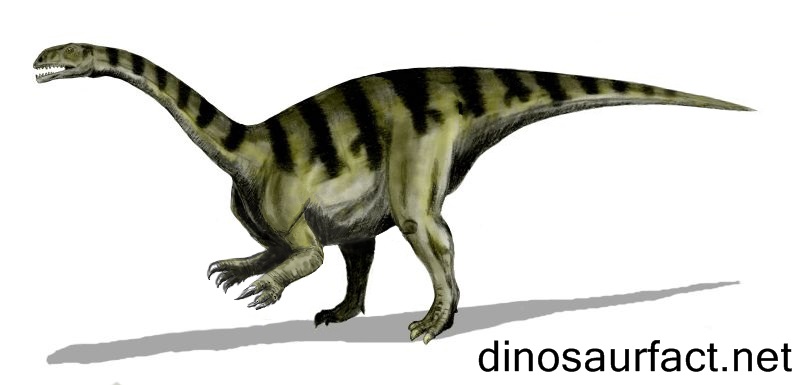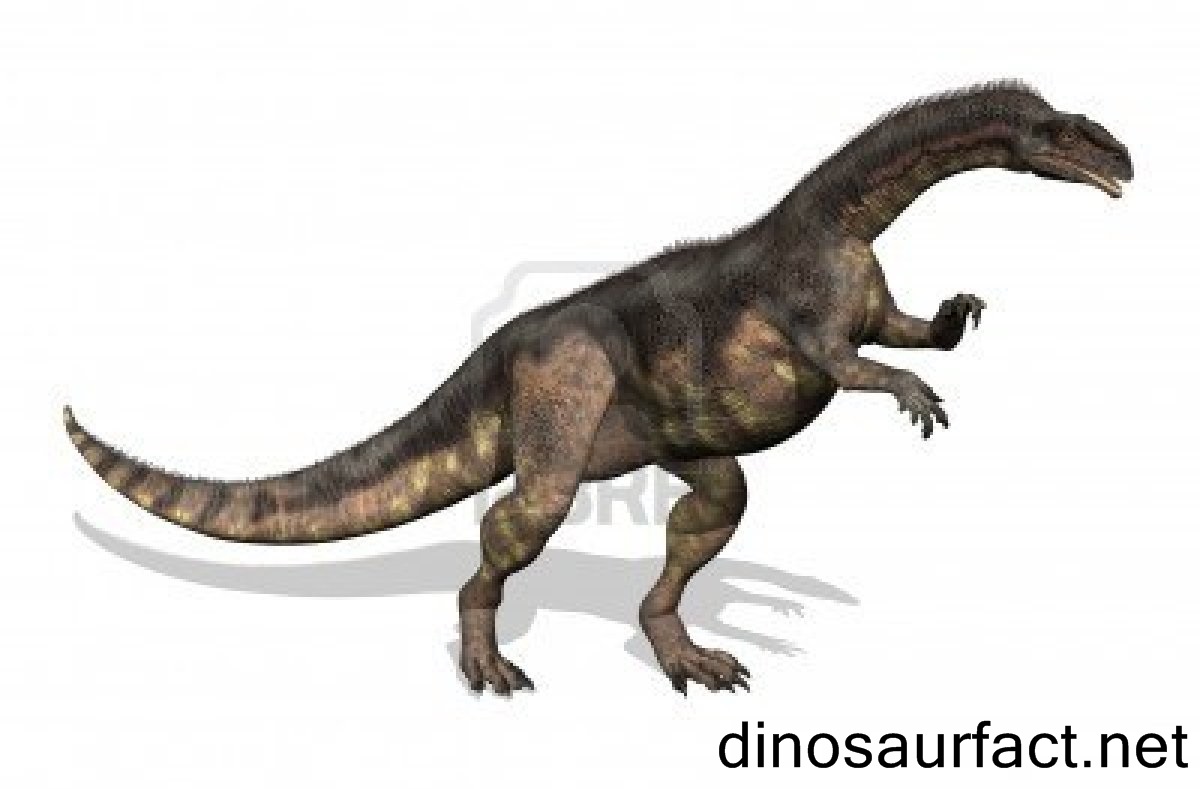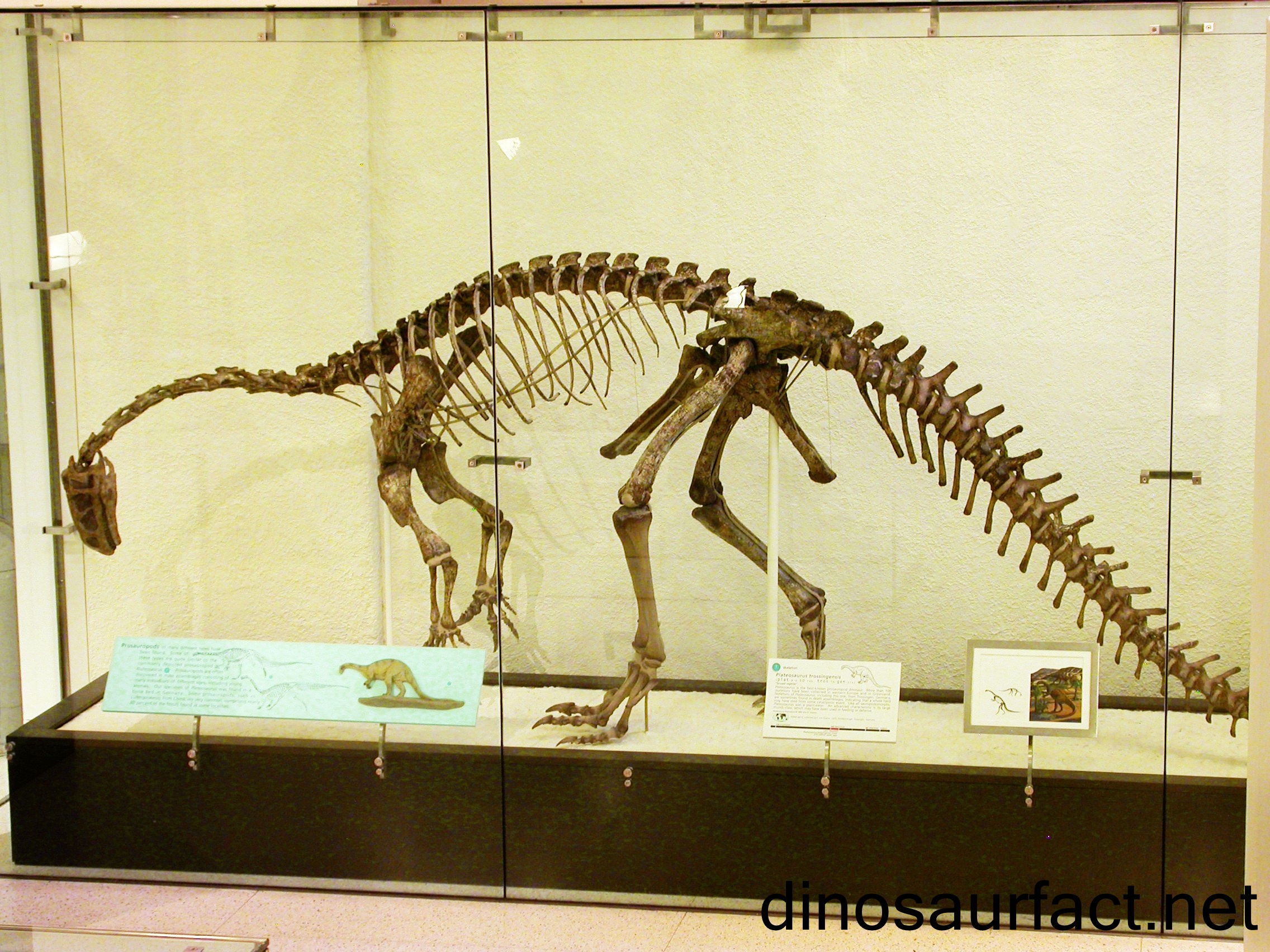 Click to visit the previous dinosaur bio
Click to visit the previous dinosaur bio
 |
|
 |
|
Kingdom: Animalia
Phylum: Chordata
Class: Sauropsida
Superorder: Dinosauria
Suborder: Sauropodomorpha
Family: Plateosauridae
Genus: Plateosaurus
 |
|
 |
|
 |
|

The Plateosaurus dinosaur is one of the first discovered dinosaur species that is still considered valid. It lived in the arid deserts of ancient Europe. It was sauropodomorph plateosaurid dinosaur. It is one of the most commonly known dinosaurs.
The late Triassic
The late Triassic is the last epoch of the Triassic period. It is followed by the Jurassic period and preceded by the Middle Triassic. It comprises of three stages or ages: the Carnian, Norian and Rhaetian. The Late Triassic ends in an event known as the Triassic-Jurassic extinction. The Upper Triassic, as it is also known, is home to many early dinosaurs.
The Discovery of Fossils
The fossils were first discovered in 1834 by Johann Friedrich Engelhardt. The species was described in 1837 by Hermann von Meyer as a separate genus Plateosaurus. The type species is P. engelhardti, named after the discoverer.
The fossils were found at Heroldsberg near Nuremberg, Germany. Since then, nearly a hundred or more Plateosaurus fossils have been found in over 50 locations in Germany. The most important of these places are Halberstadt in Saxony-Anhalt, Trossingen in Baden-Wurttemberg, as they yielded well preserved fossils in large numbers. Up to the 1930s, excavations in a clay pit in Saxony-Anhalt revealed between nearly 50 skeletons that belonged to Plateosaurus alone, besides other theropods and prosauropods.
The Black Forest quarry in Trossingen from 1911 and 1932 was subject to excavations during six field seasons led by German paleontologists Eberhard Fraas, Friedrich von Huene and finally Reinhold Seemann revealed a total of 35 complete or almost complete remains, besides fragments of remains of approximately 70 Plateosaurus dinosaurs.
Besides Germany, Plateosaurus fossils were also recovered from Frick, Switzerland in a clay pit of the Tonwerke Keller AG in 1976. In 1997, workers of the Snorre oil field, at the northern end of the North Sea, stumbled upon fossils in the sandstone while drilling for oil at 2,256 meters (7,402 ft) below the sea. Martin Sander and Nicole Klein, paleontologists from the University of Bonn, identified the fibrous bone tissue as belonging to the Plateosaurus. Plateosaurus remains have also been found in the Fleming Fjord Formation, Eastern Greenland.
Physical characteristics
The body of the Plateosaurus is typical of herbivorous bipedal dinosaurs. Fully grown individuals measured between 45 to 10 meters long and weighed a maximum of 4,000 kilograms. The dinosaur had a small skull, an elongated and flexible neck that comprised of 10 vertebrae, a stout body and a long, flexible tail composed of at least 40 vertebrae.
The arms of Plateosaurus were strongly built, with hands adapted in such a way that they allowed for grasping. The shoulder girdle was very narrow. The hind limbs had slightly flexed knees and ankles and the animal walked on its toes. The long metatarsus and lower leg show that Plateosaurus could move swiftly on its hind limbs. It could have also lifted up its front limbs for feeding off tall trees.
The posture of the Plateosaurus has been subject to much debate. Von Huene concluded that the creature had erect hind limbs, with a steeply angled backbone held at a steep angle. Jaekal, the main researcher of the fossils from the Halberstadt thought the animals were quadrapedal. He assumed they walked like lizards, with a sprawling limb position. He then leaned towards favored clumsy hopping. German zoologist Gustav Tornier interpreted the shape of the articulation surfaces in the hip and shoulder as typically reptilian.
Fraas also favored the reptilian theory. Many researchers were of the opinion that Plateosaurus could shifted between quadrapedal (for slow speeds) and bipedal gaits (for rapid locomotion). Wellnhofer insisted that the tail curved towards the ground, making a bipedal posture impossible. However, Moser demonstrated that the tail was actually straight.
The study of the Plateosaurus’ forelimbs by Bonnan and Senter showed that Plateosaurus was not capable of pronating its hands. This indicated that the dinosaur could only exhibit complete bipedalism. Also the vast difference in lengths of the hind limbs and forelimbs, the restricted range of motion of the forelimb and the fact that the body’s center of mass acts about the lower limbs proves that the Plateosaurus was in fact, bipedal.
The Plateosaurus had a narrow skull. The skull was thrice as long as it is high. The large, elliptical eye socket, the triangle-like antorbital opening and the nostril are approximately of the same size. The teeth are small and leaf-shaped, socketed into the jaw. The jaw joint was positioned low, giving the chewing muscles leverage, so that Plateosaurus could demonstrate a strong bite.
About the Plateosaurus dinosaur
The name Plateosaurus stands for ‘broad lizard’. This is a reference to the creature’s stocky body. It is the fifth earliest discovered dinosaur that is a valid species. It is a basal sauropodomorph dinosaur. It was also the first prosauropod to be described.
The two species of the dinosaur i.e. the P. engelhardti and P. gracilis belong to different sections of the Triassic period. P. engelhardti remains have been found in the upper Norian or Rhaetian formations whereas P. gracilis was found in the Lower Norian rock formations.
The dinosaur was exclusively herbivorous. The teeth and jawbone have been developed to chew plants and leaves. The eyes are at the sides rather than front, allowing it to be wary of its surroundings and predators. Many characteristics seen in the Plateosaurus are typical of non-avian dinosaurs. Although the rib cage and nasal and respiratory bones show that it had a peculiarly avian respiratory system.
The Plateosaurus dinosaur grew up to sexual maturity very rapidly after which the growth slowed. Even so, it did not stop altogether and the dinosaur continued to grow until after maturity up to a certain period. This shows that the growth of the dinosaur was determinate. The species showed varied growth patterns, with full grown adults ranging from as low as 5 meters to as much as 10 meters.
Being one of the oldest and analyzed dinosaur about which sufficient data is known, the Plateosaurus is definitely a bookmark in the time history of the earth.
Index
Extinct Profiles
 Triassic Dinosaurs
Triassic Dinosaurs Jurassic Dinosaurs
Jurassic Dinosaurs Cretaceous Dinosaurs
Cretaceous Dinosaurs Pterosaurs
Pterosaurs Marine Reptiles
Marine Reptiles Dinosaur Extinction
Dinosaur Extinction